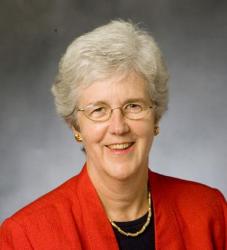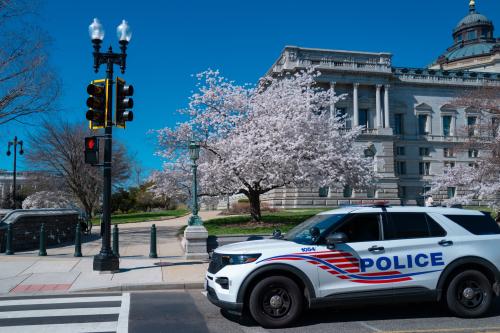This policy brief is based on the authors’ study, England Confronts the Limits of School Autonomy, National Center for the Study of Privatization in Education, Working Paper 232, October 2016. http://ncspe.tc.columbia.edu/working-papers/OP232.pdf
Introduction
Charter schools were created in the U.S. in the early 1990s around a clear but limited vision. The idea was to give these publicly financed schools a measure of autonomy in matters such as hiring, curriculum, and scheduling. In return, charters would be held accountable to parents because they were to be choice schools, as well as to a chartering body, such as a state board of education or other state entity, for academic results.
Such arrangements were embraced by supporters as a means of promoting innovation in teaching and learning, offering more schooling options for disadvantaged families, and serving students who might be alienated from traditional public schools. Some early proponents of charters suggested that they could become a model for public education in general, but for the most part early supporters viewed them as a means of enriching the current system while operating on its fringe.
The number of charter schools has increased steadily during the past 25 years. By 2013-14 (the year of the most recent data) 6,500 charter schools were operating in 40 states. In that year, charter schools accounted for 6.6 percent of all public schools and enrolled 2.5 million students, or 5.1 percent of all public school students.[i] Charter schools are unevenly distributed across states and districts. Arizona has the highest proportion, with 15 percent of its students in charter schools, while charters in other states such as Louisiana, Florida, and Utah have experienced rapid growth, especially during the past 10 years. At the district level, charters now enroll more than 30 percent of students in at least 14 districts, including a majority of students in Detroit.[ii] Following Hurricane Katrina in 2005, New Orleans was reorganized as a mostly charter system, and charters now serve more than 90 percent of that city’s students. Under President Obama, the U.S. Department of Education actively encouraged the proliferation of charters by using the removal of a state cap on charter schools as one of the criteria for states to obtain federal Race to the Top funds.
In short, charter schools—originally conceived as supplements or correctives to traditional public schools—are moving from the fringes to the core of some U.S. school districts.
Critics of this expansion of charter schools have raised serious questions about its consequences, both direct and indirect. Local school boards complain that charters unfairly drain needed resources from traditional public schools and that the uncertainties surrounding them make strategic planning difficult, especially since charters are not held to the same transparency and accountability standards as traditional public schools. Critics accuse charters of maintaining selective admissions and retention practices, promoting racial and socio-economic segregation, and creating what amounts to a dual education system contrary to the traditional values and intent of universal free public education.
The push to have large numbers of charters operating side by side with traditional public schools raises significant policy issues. How do you manage a system in which two sets of schools operate under different rules? How do you assure accountability for academic results and the expenditure of public funds when there is no overarching entity in charge of both sets? How do you promote democratic values and assure that local community voices will be heard when the authority of democratically elected school boards is weakened? How do you assure places for hard-to-educate students and otherwise protect the broad public interests that justify free compulsory schooling in the first place? These are pressing questions in only a handful of U.S. cities now, but they will become more common across the country if and when charters continue to account for higher proportions of all publicly-funded schools.
As U.S. education policymakers ponder such matters, it may be helpful to consider the experience of England, where a succession of governments has been enthusiastically pushing the growth of “academies,” the English version of charter schools, for the last 15 years. In March 2016, the newly elected Conservative government published a white paper, called Educational Excellence Everywhere,[iii] laying out its intention to enact legislation turning every primary and secondary school into an academy by 2022. Under such a fully academized system, all schools would receive direct funding from the national Department for Education (funding that had previously passed through the local authorities), and the role of local authorities, the English equivalent of local school districts in the U.S., would be drastically reduced. The plan was sharply criticized not only by Labour and other opposition politicians but also by some Conservative lawmakers, especially backbenchers from rural areas, and its legislative prospects in the post-Brexit environment are still unclear.
This spring we spent a month in London investigating these developments. We spoke with Department for Education officials charged with implementing the plan. We reviewed reports commissioned by the Department and various English think tanks, and we interviewed academic researchers, officials of local education authorities, headteachers (school principals), and other stakeholders. Our objective was to learn what lessons the English experience might offer to U.S. policymakers grappling with the challenges of their own expanded charter school sectors.
The expansion of academies in England began in 2002 when the Labour government of Prime Minister Tony Blair introduced the concept as a solution to the ongoing problems of struggling secondary schools in disadvantaged urban areas. The idea was to recruit wealthy philanthropists and others willing and able to invest £2 million and to serve as sponsors of autonomous schools that would be set up as charitable trusts and operate outside the control of local authorities. Inspired in part by the success of these early academies, the coalition government of Conservatives and Liberal Democrats that assumed power in 2010 extended the academy option to all schools. By 2016, two-thirds of secondary schools in England, as well as many primary schools, were operating as academies. In that year the newly elected Conservative government chose to end what had evolved into a dual system of academies operating side by side with schools “maintained” by the country’s roughly 150 democratically elected local authorities. The government’s plan to replace it with one in which all 20,000 schools in England would become academies by 2022 would constitute the most significant change in English primary and secondary education since the waning days of World War II.
So what insights and lessons might education policymakers in the U.S. grappling with questions that accompany the growth of charter schools glean from the English experience with academies thus far?
-
The inefficiencies and challenges of a dual system of schools.
Our first observation relates to the challenges of running a system in which schools maintained by local authorities and operating under one set of rules exist side by side with a steadily growing number of academies functioning under quite different rules. This dual system came about in England because of conscious policy choices favoring academies over maintained schools, including special funding for schools that converted to academy status and a provision that capital funds for new schools could be used only for academies.
As the trend continued, local authorities could only stand by and watch as school improvement funds previously under their control (but which, along with most other funding for schools, came from the central government) were diverted to the academies. Reduced funding forced many of the local authorities to reduce their staffs and made it more difficult for them to maintain high quality school support personnel. The fact that academies enjoyed greater flexibility with respect to managing teachers and admitting students (albeit under some national guidelines) further complicated the ability of local authorities to attend to the interests of all students in the local area. For example, because academies serve as their own admissions authorities, local authorities have little leverage in forcing academies to accept difficult-to-place pupils.
The government justified its March call for full academization partly on the ground that the dual system had become “inefficient and unsustainable in the long term.”[iv] As we will argue below, the decision to pursue that option rather than the alternative approach of strengthening local authorities and pre-existing traditional schools in the English context was reckless and potentially very risky.
The decision to pursue that option rather than the alternative approach of strengthening local authorities and pre-existing traditional schools in the English context was reckless and potentially very risky.
While the dual system that emerged in England reflects features unique to the English education system, similar trends are apparent in the U.S. in the wake of policy decisions favoring the growth of the charter sector. In addition to diverting state and local funding that would otherwise go to traditional public schools, charters often receive special treatment in areas such as relaxed financial reporting or any obligations to provide transportation or subsidized meals to low-income students. A frequent complaint among members of local school boards is that charters find ways to avoid taking and retaining their fair share of high-needs children who are more challenging and expensive to educate. It is significant that the national board of the National Association for the Advancement of Colored People (NAACP) recently called for a moratorium on the expansion of charter schools until such a time as they are, among other things, “subject to the same transparency and accountability standards” as regular public schools.[v]
With the exceptions of New Orleans, Detroit, Washington, D.C., and a few other districts, urban school districts in the U.S. have yet to reach the point where charters represent a large share of local schools, much less the norm. But even the emergence of charters as a critical mass of schools in a local district can lead to the governance challenges observed in England. At some point, states may be tempted to conclude, as did English policymakers, that having a system in which substantial numbers of schools operate under two very different sets of rules makes little sense. They will then face the task of rationalizing the system either by strengthening the capacity of traditional governance
The emergence of charters as a critical mass of schools in a local district can lead to the governance challenges observed in England.
structures to accommodate both traditional public schools and charters or by greatly expanding the charter sector and devising new governance structures for them. In addressing this task, it would behoove American policymakers to understand the challenges that England is facing as it tries to rely on a system of autonomous schools to meet its stated goal of promoting educational excellence throughout the country.
-
The limits of autonomy
The rapid, and uncontrolled, growth of the academy sector unleashed by the coalition government in 2010 taught the subsequent Conservative government an important lesson about the limits of school autonomy. They learned that simply turning governing authority to individual autonomous schools, especially to relatively small primary schools operating in isolation, was never going to lead to a high-quality school system.
The English solution was to encourage, and in the case of struggling schools to require, individual academies (which under English law are established as nonprofit trusts) to band together into formal chains referred to as Multi-Academy Trusts (MATs). The hope was that the MATs would provide each of its member schools with the important support services, such as financial expertise and professional development for teachers, previously supplied by local authorities. The Government’s confidence in the ability of MATs to do so was apparently based on the demonstrated success of both the early Labour academies and some of the existing academy chains, such as ARK with its 34 schools and the Harris Federation with its 28. Somehow the Government completely missed, or chose to ignore, the fact that the Labour academies enjoyed huge financial and sponsorship advantages that are no longer available. It also ignored evidence that many of the existing academy chains were, in fact, quite ineffective. Studies commissioned by the Sutton Trust in 2014 and 2015 concluded that while there were examples of chains with impressive records in serving underrepresented students, “a far larger group of low-performing chains are achieving results that are not improving and may be harming the prospects of their disadvantaged students.”[vi]
The English government fully understands that struggling schools, especially small primary schools, need external support, and it is grappling with the challenge of how to provide such backup in the absence of local authorities. Its current, admittedly imperfect, strategy is to try to convince viable primary level academies to establish a MAT that will take on struggling academies with the goal of improving them. We are not optimistic about the success of this strategy.
Free-standing charter schools in the U.S. face many of the same challenges as autonomous academies in England. Examples abound of charters that have abruptly closed their doors because of financial, enrollment, or other problems and left local school districts to pick up the pieces. The U.S. counterpart to the MATs in England would be the clusters of charter schools operated by then nonprofit Charter Management Organizations (CMOs) or by the for-profit Education Management Organizations (EMOs). While some CMOs, such as the Knowledge is Power Program (KIPP) that operates more than 200 schools in 20 states and the District of Columbia, have earned praise for the quality of their curricula and academic support services, many others are far less effective.
Thus, the experience in both countries is that while some MATs in England or CMOs in the U.S. are well managed and are likely to have the financial and managerial resources needed to operate an effective system, many do not. Identifying a sufficient supply of well-functioning MATs or CMOs is not a reliable substitute for a system of well-functioning local school districts.
To be sure, not all U.S. local school districts operate effectively, and many clearly need attention. The English experience, however, raises concerns about trying to solve that problem simply by creating an alternative network of charter schools—both free-standing and members of chains—operating independently of regular school districts. Why not address such problems directly by looking for ways to strengthen the capacity of local school districts and their schools? It is worth noting that while many Inner London boroughs were among the lowest performing local authorities in England during the mid-1990s, their students are now achieving above national averages despite their large proportions of disadvantaged and immigrant children. Importantly, this improvement at the primary level in these boroughs reflects community-wide improvements and cannot be attributed to the growth of academies.[vii]
-
The need for strong overall management structures.
A third lesson emerges from the challenge of managing the system of 20,000 English schools from London. As an alternative to a network of strong local authorities, the government has created a new middle level bureaucracy of nine Regional School Commissioners (RSCs) charged with overseeing schools in their assigned regions. They make decisions with the assistance of boards of head teachers and other educators who are presumably in touch with local needs.
It is too early to say how these RSCs, who are civil servants in the Department for Education, will function or how large a staff they will require, much less how successful they will be. Concerns have already arisen about the lack of transparency with which they currently operate and whether they are in a position to understand how needs differ across their region. In addition, it is far from clear that the department even has the capacity to manage the funding and auditing of the thousands of schools in each region. The basic point is that, in pushing for a fully academized system, the government has had to create a whole new bureaucracy to fill the vacuum left by the evisceration of local authorities. Developing one that operates efficiently and that is appropriately responsive to local concerns is likely to pose significant challenges.
Given our decentralized system of education in the U.S., the challenge of managing large numbers of charter schools arises at the state rather than at the federal level. The task is complicated by the fact that many states permit numerous authorizing bodies for charter schools, including the state itself, local districts, and universities.
As the number of charter schools continues to proliferate, pressure will inevitably build to devise new bureaucratic structures to manage them.
Especially those that are struggling. One possibility would be to bring charters under the authority of local school districts; another might be to emulate the RSCs in England by setting up regional offices throughout the state to oversee them. Perhaps the closest existing analogies in the U.S. are new state-managed recovery districts such as the Achievement School District in Tennessee, established to bring together a group of struggling schools with little geographical proximity to each other. Thus far, however, there is little or no evidence that the Tennessee district has been successful. Moreover it appears to have been less successful than an alternative Tennessee strategy of setting up groups of struggling charter schools operated by the local school districts.[viii]
-
Threats to local communities and democratic values.
A fourth lesson has to do with the impact of a dual system on local communities. Schools have traditionally played a central role in the social, economic, and cultural life of the communities in which they reside. When governed locally through democratic procedures, schools give voice to, and are responsive to, local concerns; communities in turn feel pride and a sense of ownership of their schools.
The proliferation of academies and MATs in England has severed such bonds. Many decisions with important consequences for parents and children previously made at the local level are now made by non-elected regional or national civil servants with little or no knowledge of local conditions. Others fall to leaders of MATs whose job is to manage multiple academies with no inherent geographic or other relationships to each other and who may confront situations where the interests of the MAT conflict with those of member academies. Under full academization, parents who have a complaint about how their child is being handled will no longer be assured of access to a local educator with whom to talk. Instead, they must turn to a distant head of a MAT, a regional commissioner or even to an official of the Department for Education in London who may or may not choose to operate in a transparent fashion.
Significantly, despite its efforts to replace local authorities as agents for the delivery of education, the Conservative government’s academization plan relies on such authorities to continue to serve three residual functions that clearly lie beyond the capabilities of autonomous academies and MATs: assuring a place for every child, protecting the interests of vulnerable children, and championing the interests of children and families. Weakened as they are by funding and personnel reductions, however, local authorities will struggle to carry out such responsibilities. Evidence supporting the importance of community coherence is already emerging in the forms of new types of “partnerships” in some of the more effective local communities. These new partnerships are designed to facilitate area-wide school improvement independently of the new structures being put in place by the Department for Education.
Similar undermining of the link between schools and their communities is already happening in the U.S. As with academies and MATs in England, charter schools and CMOs in the U.S. often operate with no inherent obligation to serve the overall needs of the community in which they are located. They need not accept responsibility for the education of all children in the community, especially those with high needs, nor do they have an obligation to help manage projected increases or declines in the student population on a rational basis. For example, a school board’s plans to establish a STEM-themed high school with a diverse population can be abruptly undermined if a charter school suddenly decides to set up a competing school nearby. Such situations seriously undermine the ability of local school boards to engage in strategic planning aimed at serving broad public interests. Such difficulties are exacerbated when the charters involved are part of a chain whose interests lie across multiple communities.
Reaction to the severing of the connections between charter schools and their communities is already evident in the U.S., most notably in New Orleans. The chaos of the post-Katrina environment provided an opening for charter advocates to push successfully for an almost all-charter system in that city with much of it governed by the state. Although the new structure generated significant gains in student achievement,[ix] it also highlighted the limitations that arise with a system of autonomous schools. Over time, New Orleans has addressed some of those limitations by introducing a centralized enrollment policy and, more recently, a centralized student expulsion system.[x] In addition, broader concerns have arisen about the sustainability of the new structure given that it sacrificed the interests of local black educators in favor of a far whiter workforce from out of state and greatly diminished the authority of locally elected officials. The situation in New Orleans is complicated, but the bottom line is that 10 years later the state is now “returning” operational authority for New Orleans schools to the local Orleans Parish School Board. While schools will retain charter status and, hence, most of their autonomy, the local board now has the authority, among other things, to authorize and revoke charters, hire and fire school operators, and to require that all charter schools participate in the centralized enrollment system.
-
The risks of radical systemic change.
A final lesson has to do with the risky and reckless nature of the Conservative Government’s academization policy. In the course of our research in London we began asking respondents to suggest one or two adjectives that they would use to describe the plan. Some of our sources, cognizant of the general direction of changes in government education policy over the last few years, suggested “predictable.” Others offered language ranging from “ambitious” and “overzealous” to “risky,” “reckless,” and “a disaster waiting to happen.”
Despite rhetoric of political leaders to the contrary, the English education system operated by local authorities was in fact performing reasonably well, especially at the primary level. A 2014 report by the Policy Exchange, a respected London think tank that supports a full-blown academy system, acknowledged that the system of local authorities was not only not failing but, as measured by the share of schools rated good or better, had actually been improving over the past decade.[xi] Our own analysis of the local authorities confirms that conclusion. Moreover, as shown in the Sutton Trust study mentioned above, there is no reason to believe that a fully academized system will be any better than the current one. The academization plan seems to have been inspired less by reasoned policymaking than by an ideological belief in the weakness of bureaucratic systems and unshakeable faith in decentralization and autonomy as guiding principles for organizing the state education system.
The plan thus begs the question: why replace a known system that, while imperfect, has served the country well for 75 years with one that has never been tested? Most likely, the new system would resemble the old one, with some good schools, some poor schools, and most in the middle. At its worst, the academization plan could saddle the national government with an impossible managerial task while letting locally elected officials off the hook for the success or failure of their local schools. In such a situation, the question will arise: ho, if anyone, is responsible for English education?
The push to greatly expand the role of charters in the U.S. is being driven by some of the same ideological forces as in England, including debatable claims that U.S. schools overall are failing, lack of faith in local school boards and, among some proponents, the notion that any significant change must be comprehensive and “disruptive.” As was the case in England in 2010, reformers in the U.S. have generalized from successes of some charters in inner cities, especially those driven by a no-excuses philosophy,[xii] and used this success to justify removing state caps on the number of charters and even to make charters the norm. However, studies of U.S. charters show that even though charter schools appear to be more effective than traditional public schools in many urban areas[xiii], that is not the case in all urban areas nor in many nonurban areas.[xiv]
U.S. education policymakers pushing continued expansion of the charter sector would be wise to resist the assumption that promoting charter schools is a panacea for perceived weaknesses in U.S. education.
Weakening a long-established system of governance that continues to work reasonably well to advance an unproven system of independent organizations with little centralized governance raises a whole set of new questions and challenges, making it a high-risk strategy.
A final thought: How to think about the role of charters in the U.S.
The Conservative government in England had at least two viable alternatives to the policy of full-scale academization that it embraced as its official education policy in 2016. Rather than trying to create a whole new education system, it could have embarked on a systematic effort to strengthen the capacity of local authorities while recognizing the value of a limited number of academies. Alternatively, given that two-thirds of secondary schools were already academies, they could have opted for full academization at the secondary level while leaving primary schools alone.
Policymakers in the U.S. could adopt the strategies that England shunned. They can devise democratic governance structures and systems of support that assure that both traditional public schools and charters promote broad public interests. They can look for ways for each sector to learn from the other, including the possibility of giving traditional public schools some of the same operational flexibility enjoyed by charters. They can create compacts between the charter and traditional public school sectors whereby districts help charters with services such as transportation and subsidized meals in return for agreement by charters to accept responsibility for all children in the district.
The original vision of charter schools as institutions that, while operating on the fringes, can enrich public education in the U.S. remains a viable one. England’s experiences with academies, however, serves as a warning that promoting the development of large concentrations of charter schools operating independently of local school districts is a strategy fraught with risk for students and local communities.
[i] National Center for Education Statistics. “The Condition of Education, Charter School Enrollment.”Last modified April, 2016. http://nces.ed.gov/programs/coe/indicator_cgb.asp.
[iii] GOV.UK. “Educational excellence everywhere,” Last modified March 17, 2016. https://www.gov.uk/government/publications/educational-excellence-everywhere.
[iv] Ibid. Section 4.6: 55.
[v] NAACP. “Statement regarding the NAACP’s Resolution on a moratorium on charter schools.” Last modified October 15, 2016. http://www.naacp.org/latest/statement-regarding-naacps-resolution-moratorium-charter-schools.
[vi]Merryn Hutchings, Becky Francis, and Philip Kirby, “Chain Effects 2015: The impact of academy chains on low-income students,” The Sutton Trust (July, 2015):4, accessed November 1, 2016, http://www.suttontrust.com/wp-content/uploads/2015/07/Chain-Effects-2015.pdf.
[vii] Helen F. Ladd and Edward B. Fiske, “Educational Success in two London boroughs: Lesson for the U.S,” The Brookings Institution (February 16, 2016), accessed November 1, 2016. https://www.brookings.edu/research/educational-success-in-two-london-boroughs-lessons-for-the-u-s/.
[viii] Ron Zimmer, Gary T. Henry, and Adam Kho, “The Role of Governance and Management in School Turnaround Policies: The Case of Tennessee’s Achievement School District and iZones.” Vanderbilt University Working Paper,, May 9, 2016. https://aefpweb.org/sites/default/files/webform/41/ASD_iZone%20Impact%20Paper%20conference%20online%20version.pdf.
[ix] Douglas Harris, “Good News for New Orleans: Early evidence shows reforms lifting student achievement,” Education Next, Fall 2015. Accessed November 1, 2016. http://educationresearchalliancenola.org/files/publications/ednext_XV_4_Good-News-for-New-Orleans-Harris.pdf.
[x] Betheny Gross, Sivan Tuchman, and Sarah Yatsko, “Grappling With Discipline in Autonomous Schools: New Approaches From D.C. and New Orleans.” Center on Reinventing Public Education (June, 2016): Table 1, accessed November 1, 2016, http://www.crpe.org/sites/default/files/crpe-grappling-with-discipline-6.2016-final.pdf.
[xi] Annaliese Briggs and Jonathan Simons, “Primary Focus: The next stage of improvement for primary schools in England,” Policy Exchange (September 23, 2014), accessed November 1, 2016. https://policyexchange.org.uk/wp-content/uploads/2016/09/primary-focus.pdf.
[xii] Dewey to Delpit. “The No-Excuses Charter School Movement.” Accessed November 1, 2016. http://edcommentary.blogspot.com/p/no-excuses-charter-movement.html.
[xiii] Urban Charter School Study. “Urban charter schools in the aggregate provide significantly higher levels of annual growth in both math and reading compared to their TPS peers.” Accessed November 1, 2016 http://urbancharters.stanford.edu/index.php and Center for Research on Education Outcomes (CREDO). “National Charter School Study.” Last modified 2013. Accessed November 1, 2016. https://credo.stanford.edu/documents/NCSS%202013%20Final%20Draft.pdf.
The Brookings Institution is committed to quality, independence, and impact.
We are supported by a diverse array of funders. In line with our values and policies, each Brookings publication represents the sole views of its author(s).





